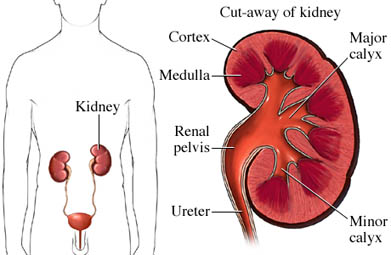The kidneys are composed of nephrons, the tiny tubes that lie side by side with small blood vessels, which filter your blood. These bean-shaped organs are important because they help balance the fluids and electrolytes in your body. They do not only remove wastes from the body, but they also help control your blood pressure, maintain healthy bones, and produce red blood cells.
When you have a chronic disease such as diabetes or heart disease, your kidneys can get progressively damaged, causing your nephrons to shut down. After some time, you may experience a mild decrease in filtration (such as in stage 2 kidney disease), until your nephrons cannot filter wastes from the blood well enough to maintain balance. This leads to chronic kidney disease (CKD), which is a life-threatening condition.
What Is Stage 2 Kidney Disease?
1. How Is CKD Staged?
It is often difficult to tell if you have CKD because one usually does not experience any symptoms until the kidneys are severely damaged. You may not even know you have stage 2
kidney disease until you get tested.
CKD stages are based on the estimated glomerular filtration rate (GFR), a test which measures how well the kidneys are filtering wastes like creatinine from your body. There are five CKD stages:
- In stage 1, kidney function remains normal (GFR > 90mL/min/1.73 m2). Urine findings may
 be abnormal and there may be structural or genetic abnormalities.
be abnormal and there may be structural or genetic abnormalities. - In stage 2 kidney disease, renal function is minimally reduced, with GFR ranging from 60-89. Urinalysis is abnormal, and structural or genetic abnormalities are often associated. Control of risk factors, including blood pressure is suggested.
- In stage 3, GFR ranges from 30-59, indicating moderately reduced renal function.
- At stage 4, kidney function is severely reduced, with GFR ranging from 15-29.
- At stage 5, GFR is <15 and patient may be on chronic dialysis to treat very severe (end stage) renal failure.
2. Signs of Stage 2 Kidney Disease
Symptoms of kidney damage do not usually appear till the later stages because the kidneys continue functioning well even when mildly or moderately damaged. Therefore, you may not even know that you have kidney disease. Some people find out they have kidney problems only when being examined for another condition such as high blood pressure or diabetes – the two most common causes associated with kidney disease.
Signs of stage 2 kidney disease may include:
- elevated creatinine/urea levels in the blood
- presence of blood/protein in urine
- kidney damage found in contrast X-ray, CT scan, MRI, or ultrasound
- A family history of polycystic kidney disease
3. Risk Factor
There are several factors that can increase your risk for developing kidney disease. These include:
- Age > 60 years
- Diabetes
- Hypertension (high blood pressure)
- Heart disease
- Family history of kidney disease
- Racial tendency: being Asian, Hispanic, African-American, or Native American
4. Tests for CKD
- Urine test, which is the simplest test to see if you have protein, sugar or blood in the urine. These elements are not usually found in normal urine, so the presence of any of these may signal that something is wrong with your kidney function.
- Estimated glomerular filtration rate (eGFR): If you have too much of creatinine in your blood, it may be a sign that your kidneys are not able to filter it out of your body.
- Blood pressure is another way that can help determine if you are at risk for kidney disease. Chronic high blood pressure can lead to kidney disease, but CKD can also cause your blood pressure to rise. Normal blood pressure is usually around 120/80, but if it goes over this threshold in several occasions, then your kidneys may be at risk.
How to Deal With Stage 2 Kidney Disease
The aim of treating stage 2 CKD is to identify if the disease is worsening and to identify the associated risks, such as cardiovascular disease and death. It is, therefore, necessary to manage and control the disease in its early stages to prevent it from getting worse.
1. Monitor Closely
If you have stage 2 kidney disease, your doctor will evaluate your kidneys regularly by monitoring your:
- Creatinine levels, which may rise progressively and lead to a significant decrease in your eGFR.
- Urinary protein or proteinuria, which indicate progressive kidney damage.
- Blood pressure levels, which may continue to increase with progressive loss of kidney function.
- Cardiovascular function, which may be influenced by your smoking habits, exercise, diet and lifestyle. You may need cholesterol lowering treatment if you have vascular disease, or if you are at risk of cardiovascular events (such as a heart attack).
2. Home Care Tips
- Consume a healthy diet consisting of whole grains, fruits, vegetables, and an adequate amount of proteins. Limit salt, fat and sugar intake. Balance your calorie intake with the amount of calories you burn to maintain a healthy weight.
- Exercise regularly.
- Control your blood sugar levels. A maximum BP level of around 130/85 is considered healthy for most people. But if you have diabetes or proteinuria, aim at a BP level around 125/75.
- Have regular medical checkups and monitor your serum creatinine by measuring your GFR.
- Take medications as prescribed by your doctor.
- Stop smoking.
- Reduce alcohol intake.
- Ask your doctor to review of your medications to make sure that you are not taking medicines that can affect your kidneys.
